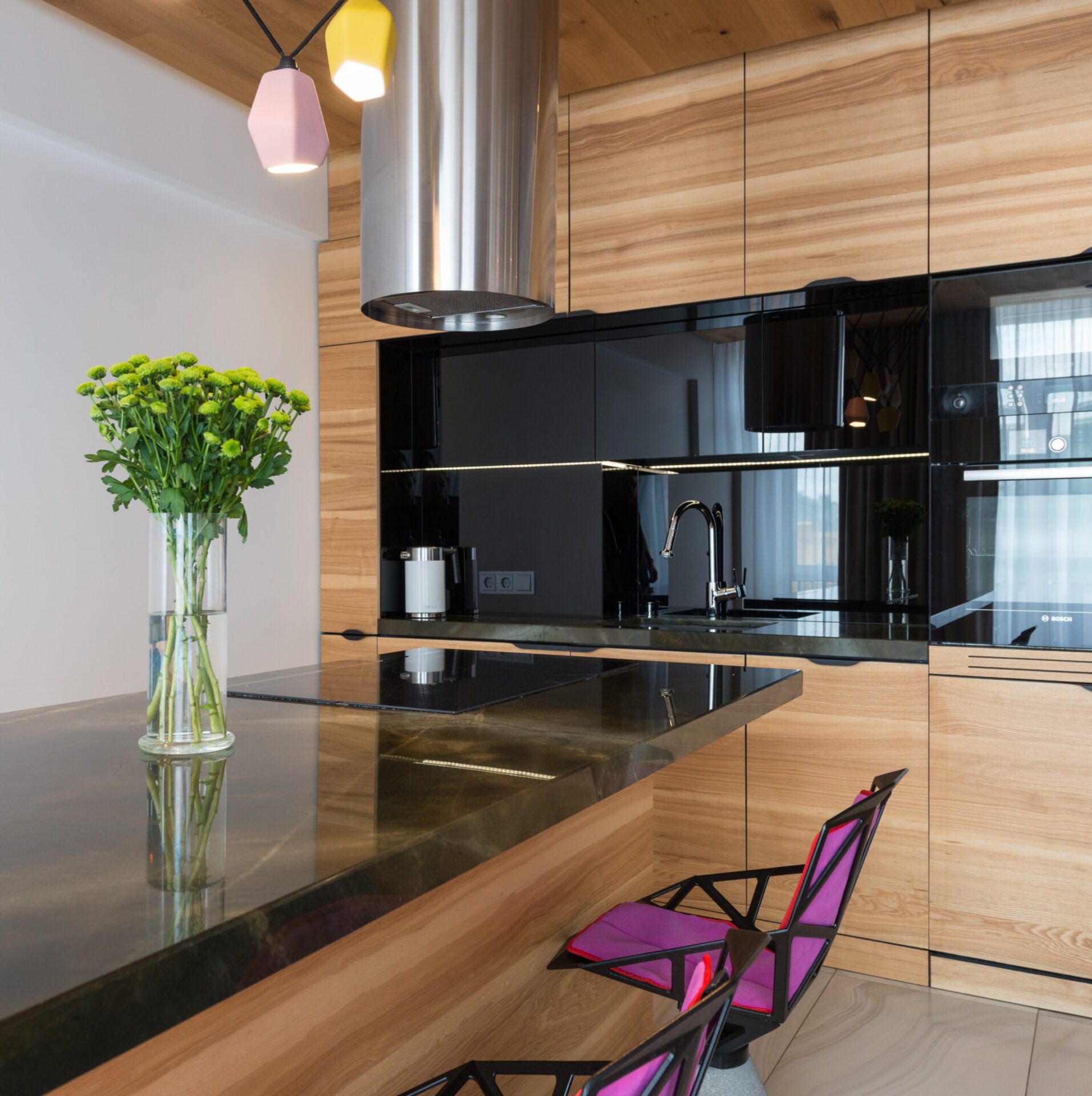Fitted Kitchens: Buying Guide of 2023
A fitted kitchen is more than just a place where you prepare meals. It’s the heart of your home, a hub of family activity, a space for culinary creativity, and a gathering spot for conversations and camaraderie. Understanding how to design a fitted kitchen that’s not only practical but also stylish can be a daunting task. This comprehensive guide will help you navigate through the numerous considerations involved in creating your dream fitted kitchen.
Importance of a Fitted Kitchen
A fitted kitchen is a specifically designed kitchen where the units, appliances, and storage spaces are seamlessly integrated to optimize the use of space and functionality. It’s characterized by coordinated cabinets, worktops, and appliances that match the size, layout, and style of the room. Let’s explore why a fitted kitchen can be a great choice:
- Efficient Use of Space: Fitted kitchens are designed to make the most of every available inch in your kitchen. Custom-built cabinets and worktops fit perfectly into your space, avoiding awkward gaps and ensuring maximum storage.
- Consistency in Design: A fitted kitchen provides a cohesive and harmonized look since all components follow a consistent style and theme.
- Enhanced Functionality: Every aspect of a fitted kitchen, from the placement of the appliances to the location of the storage units, is planned with your cooking habits and needs in mind. This results in a space that is intuitive and easy to navigate.
- Increased Home Value: A well-designed fitted kitchen can significantly increase the value of your home. It’s often one of the first things potential homebuyers look at, and a beautiful, functional kitchen can be a major selling point.
Understanding Your Space and Budget
Before you start planning your fitted kitchen, it’s crucial to understand your available space and budget. Measure your kitchen space accurately, taking into account the floor area, wall size, and placement of doors and windows. This information is crucial when it comes to choosing the size of your cabinets, appliances, and determining the layout of your kitchen.
Budgeting is another critical aspect. The cost of a fully fitted kitchen can vary greatly depending on your choice of materials, appliances, and the complexity of the design. Make a list of your must-haves and nice-to-haves, and prioritize your spending accordingly. If you’re working with a tight budget, focus on functional elements first, like efficient storage solutions and good quality appliances. Style elements, while important, should not compromise the functionality of your kitchen.
Choosing the Right Kitchen Style
The style of your kitchen should reflect your personal taste and complement the overall aesthetic of your home. There are three main kitchen styles to consider:
- Traditional: Traditional kitchens offer a warm, homey feel. They often feature wooden cabinets, ornate molding, and classic finishes. Rich, warm colors are commonly used, along with classic patterns and fabrics.
- Modern: Modern kitchens are all about minimalism and simplicity. They often feature sleek lines, glossy finishes, and a neutral color palette. Innovative storage solutions and state-of-the-art appliances are hallmarks of a modern kitchen.
- Shaker: Shaker kitchens strike a balance between traditional and modern styles. They are characterized by their simple, unadorned design with a focus on practical functionality. Shaker cabinets, with their distinctive five-piece door and recessed center panel, are a popular choice in shaker kitchens.
Explore these styles further in our gallery to visualize how they might look in your home.
Essential Components of a Fitted Kitchen
Kitchen Cabinets
Cabinets form the backbone of a fitted kitchen, providing much-needed storage and helping to define the overall look of the space. There are several factors to consider when choosing your kitchen cabinets:
- Material: The material of your cabinets plays a significant role in defining the look and feel of your kitchen. Wood cabinets offer a warm, classic look, while stainless steel or lacquered cabinets give a more modern appearance.
- Color: Your cabinets’ color can drastically alter your kitchen’s ambiance. Light colors can make a small kitchen feel larger and brighter, while dark hues can add depth and sophistication to a larger kitchen.
- Style: The style of your cabinet doors can also have a big impact on your kitchen’s appearance. Flat-panel doors provide a sleek, modern look, while raised-panel doors are more traditional.
- Hardware: The knobs and pulls on your cabinets are the jewelry of your kitchen. They’re small details that can make a significant difference in your kitchen’s overall style.
- Storage Features: Consider incorporating smart storage solutions into your cabinets, such as pull-out drawers, lazy Susans, and built-in spice racks, to maximize space and functionality.
Explore our range of kitchen services to find the perfect cabinets for your fitted kitchen.
Kitchen Appliances
Your kitchen appliances should be both functional and stylish. Consider the following when choosing your appliances:
- Cooking Range or Separate Oven and Cooktop: A cooking range can be a space-saving option, while separate units offer more flexibility in placement and may have more features.
- Refrigerator: Choose a refrigerator size and style that suits your needs and fits seamlessly into your kitchen design. Built-in or counter-depth refrigerators offer a sleek, fitted look.
- Dishwasher: If space allows, a built-in dishwasher can be a lifesaver. Compact or drawer dishwashers can be a good option for small kitchens.
- Microwave: Think about whether you want a countertop, built-in, or over-the-range microwave, depending on your space and layout.
- Ventilation: Good ventilation is crucial in any kitchen. A range hood is the most effective option, but downdraft ventilation or an exhaust fan can also work in some kitchens.
Check out our range of appliances to find the perfect match for your kitchen.
Kitchen Worktops
The kitchen worktop is another crucial element. It needs to be durable to withstand daily use, easy to clean, and beautiful to look at. Material choices range from natural stones like granite and marble to engineered stones like quartz, as well as laminates, wood, stainless steel, and more. Each material has its pros and cons, so it’s important to choose one that suits your needs, budget, and style. Check out our kitchen worktops buying guide for more detailed information.
Designing the Layout of Your Fitted Kitchen
The kitchen layout is the arrangement of the appliances, cabinets, and worktops in your kitchen. The right layout will create a smooth workflow, maximizing efficiency and comfort. The size and shape of your kitchen, as well as the placement of windows and doors, will play a significant role in determining the best layout. Here are some common kitchen layouts:
- Galley Kitchen: This layout consists of two parallel runs of units, forming a central corridor in which to work. It’s a great option for small spaces.
- L-Shaped Kitchen: This layout uses two adjacent walls to set up the kitchen units. It’s a flexible design that works well in both small and large kitchens.
- U-Shaped Kitchen: This layout features units along three adjacent walls, providing ample storage and worktop space.
- Island Kitchen: This layout includes a freestanding unit in the middle of the kitchen. The island can provide additional worktop space, storage, and seating.
Find out more about the kitchen services we offer to help you design the perfect kitchen layout.
Essential Features of a Fitted Kitchen
A fitted kitchen should not only be functional and stylish, but it should also include some essential features:
- Efficient Lighting: Incorporate different types of lighting such as task lighting for cooking, ambient lighting for overall illumination, and accent lighting to highlight design features.
- Adequate Ventilation: Proper ventilation keeps your kitchen clean and fresh. Consider installing an exhaust fan or a chimney.
- Safe and Easy-to-Clean Flooring: Your kitchen flooring should be slip-resistant and easy to clean. Ceramic tiles, vinyl, and laminate are popular choices. Take a look at our blog post on the latest trends in stone flooring for some inspiration.
- Convenient Power Sources: Plan for enough electrical outlets for all your appliances, ideally spread out to cover all areas of your kitchen.
- Space for Waste Management: Incorporate a waste management system into your kitchen design, with separate bins for recyclable and non-recyclable waste.
- Safety Features: Safety is paramount in a kitchen. Install smoke detectors, fire extinguishers, and consider child-safety locks if you have young children.
Explore our range of kitchen services to incorporate these essential features in your fitted kitchen.
Considering the Kitchen Work Triangle
The kitchen work triangle concept is a simple principle that can help create an efficient kitchen layout. The three points of the triangle are the refrigerator, the sink, and the cooking range. The principle suggests that when these three elements are in close (but not too close) proximity to one other, the kitchen will be easy and efficient to use, reducing the effort needed to prepare meals. Read more about the right stone for your kitchen for an efficient work triangle.
Kitchen Installation and Aftercare
Installing a fitted kitchen is a significant project that involves various skills, from plumbing and electrical work to carpentry and tiling. Although it’s possible to DIY, hiring professionals will ensure the job is done efficiently and to a high standard. At Excel MG, we have a team of experienced installers who can handle all aspects of your kitchen installation.
Once your fitted kitchen is installed, proper aftercare is essential to maintain its look and functionality. This includes regular cleaning of cabinets, appliances, and worktops, annual maintenance of electrical and plumbing fixtures, and prompt repair of any damages. For more tips on how to care for your fitted kitchen, check out our guide on how to care and maintain marble and granite surfaces.
Conclusion
Creating your dream fitted kitchen involves careful planning and consideration. From understanding your space and budget, choosing the right style, to selecting the best materials for your cabinets, appliances, and worktops, there’s a lot to consider. But with careful planning and the help of experts, you can design a kitchen that’s both beautiful and functional. Ready to start your kitchen journey? Contact us at Excel MG, your trusted partner in designing, crafting, and installing fitted kitchens.
Frequently Asked Questions
1. What is a fitted kitchen?
A fitted kitchen is a custom-designed kitchen where the units, appliances, and storage spaces are integrated to optimize the use of space and functionality.
2. How much does a fitted kitchen cost?
The cost of a fitted kitchen can vary greatly depending on your choice of materials, appliances, and the complexity of the design. It’s always best to get a personalized quote based on your specific needs and preferences.
3. How can I make my small kitchen look larger?
Choosing light colors for your cabinets and walls, incorporating clever storage solutions, and using sleek, compact appliances can make a small kitchen look larger.
4. How long does it take to install a fitted kitchen?
The duration of the installation will depend on the complexity of the design and the work involved. On average, it can take between 1-4 weeks.
5. How can I maintain my fitted kitchen?
Regular cleaning, prompt repair of damages, and annual maintenance of electrical and plumbing fixtures are essential for the upkeep of your fitted kitchen.
For more information, feel free to get in touch with us at Excel MG. Our team is always ready to assist you with all your kitchen design and installation needs.


